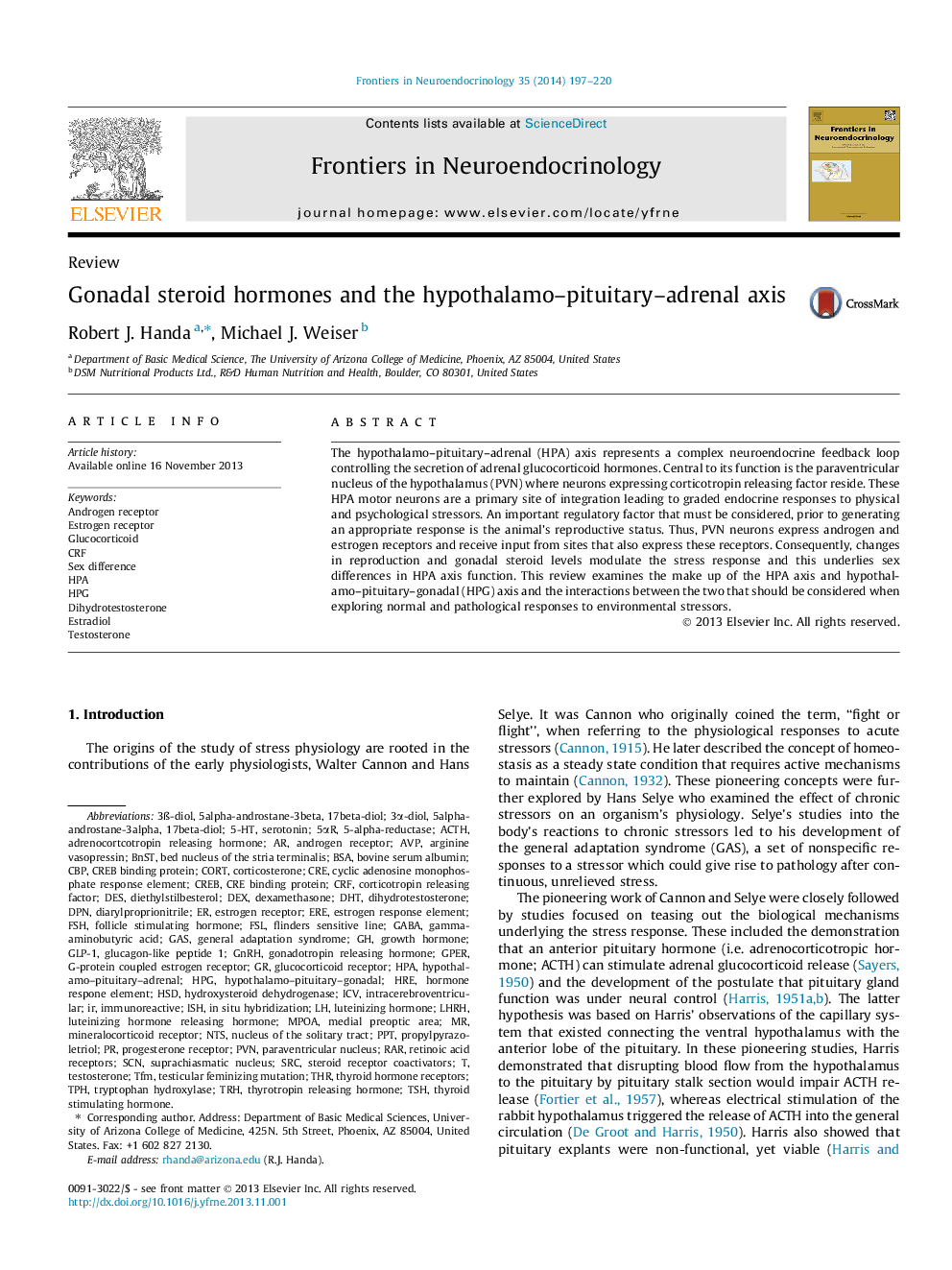| کد مقاله | کد نشریه | سال انتشار | مقاله انگلیسی | نسخه تمام متن |
|---|---|---|---|---|
| 2799376 | 1155975 | 2014 | 24 صفحه PDF | دانلود رایگان |
• The HPA axis is a complex neuroendocrine loop that integrates stressor-related information.
• Sex differences in the HPA axis arise through effects of gonadal steroid hormones.
• Estrogen can alter HPA function though divergent actions mediated by ERalpha and ERbeta.
• Androgens inhibit HPA function through actions at the androgen receptor or ERbeta.
The hypothalamo–pituitary–adrenal (HPA) axis represents a complex neuroendocrine feedback loop controlling the secretion of adrenal glucocorticoid hormones. Central to its function is the paraventricular nucleus of the hypothalamus (PVN) where neurons expressing corticotropin releasing factor reside. These HPA motor neurons are a primary site of integration leading to graded endocrine responses to physical and psychological stressors. An important regulatory factor that must be considered, prior to generating an appropriate response is the animal’s reproductive status. Thus, PVN neurons express androgen and estrogen receptors and receive input from sites that also express these receptors. Consequently, changes in reproduction and gonadal steroid levels modulate the stress response and this underlies sex differences in HPA axis function. This review examines the make up of the HPA axis and hypothalamo–pituitary–gonadal (HPG) axis and the interactions between the two that should be considered when exploring normal and pathological responses to environmental stressors.
Journal: Frontiers in Neuroendocrinology - Volume 35, Issue 2, April 2014, Pages 197–220
